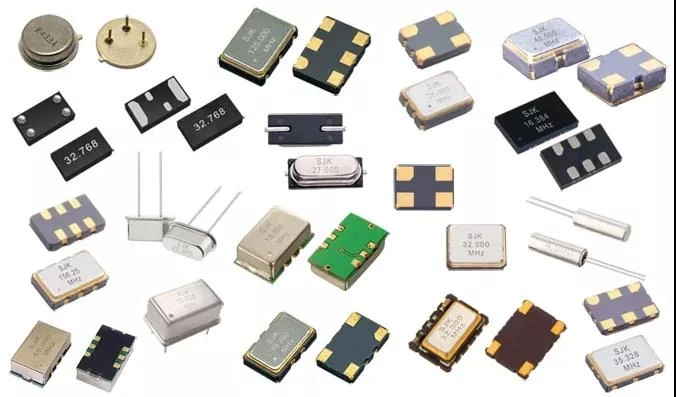There are some electronic devices that require highly stable AC signals at a high frequency, while LC oscillators are less stable and the frequency tends to drift, i.e. the frequency of the generated AC signal tends to change.
A special component, a quartz crystal, is used in the oscillator to produce a highly stable signal. This type of oscillator using a quartz crystal is called a crystal oscillator, or crystal oscillator for short, and the following figure shows a wide variety of crystal oscillators.
The trend of miniaturization of electronic components, a strong contribution to the development of the current society progress, the smaller the electronic components, the greater the space saved for the mainboard. Therefore, someone whimsical, if you can package the crystal oscillator circuit to the IC chip (such as the clock chip) internal will be how perfect, just as the active crystal oscillator in the passive crystal oscillator based on the built-in vibration chip, there is no need for external components such as capacitors and resistors.
But the actual for various reasons, the crystal oscillator is not built into the IC chip. Why is this?
Reason 1
In earlier years, the production and manufacturing process of the chip may not be able to do the crystal oscillator into the chip inside, but now it can. This issue is still mainly a practical and cost decision.
Reason 2
Chip and crystal materials are different, the chip (integrated circuit) material is silicon, while the crystal is quartz (silicon dioxide), can not be done together, but can be packaged together, it is now possible, but the cost is higher.
Reason 3
Once the crystal is encapsulated into the chip, the frequency is fixed, want to change the frequency, it is basically impossible, and placed outside, you can freely replace the crystal to provide different frequencies to the chip.
Some people say, the chip has a PLL inside, regardless of how much the crystal frequency, with PLL frequency multiplier / frequency division is not okay, then this has to go back to the cost of the problem up, 100M crystal integrated into the chip, but I can not use that high frequency, I only want to use the frequency of 10M, then why should I go to buy your integrated 100M crystal chip, expensive and wasteful.
What we usually call "on-chip clock", is not actually no crystal in the chip at all, there is RC oscillation circuit.
The above STM32 clock block diagram.
It can be seen that the STM32 system clock supply can be in three ways.
HSI, high-speed internal clock signal STM32 microcontroller with the clock (8M frequency), the accuracy is poor.
HSE, high-speed external clock signal, high precision. Source: HSE external crystal / ceramic resonator (crystal oscillator) HSE user external clock
PLL, low speed external crystal 32.768kHz mainly provides an accurate clock source Generally used as an RTC clock.
If the internal clock is selected as the system clock, its multiplier does not reach 72Mhz, at most 8Mhz/2*16 = 64Mhz.
If you use internal RC oscillator instead of external crystal, please deal with it as follows.
1) For 100-pin or 144-pin products, OSC_IN should be grounded and OSC_OUT should be suspended.
2) For products with less than 100 pins, there are 2 ways to connect
OSC_IN and OSC_OUT are grounded through 10K resistors respectively. This method can improve EMC performance.
Remap OSC_IN and OSC_OUT to PD0 and PD1 respectively, and then configure PD0 and PD1 as push-pull outputs and output '0'. This method reduces power consumption and saves (relative to i above) 2 external resistors.
The clock is the pulse of the STM32 microcontroller and is the driving source for the microcontroller.
To use any of the peripherals, the corresponding clock must be turned on. The advantage of this is that if a peripheral is not in use, its clock is turned off, thus reducing the power consumption of the system and achieving energy efficiency and low power consumption.


